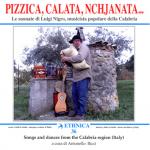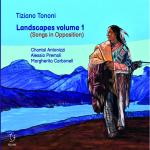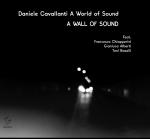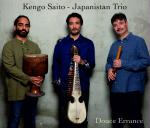

Songs and dances from the Calabria region (Southern Italy)
Luigi Nigro, a goat shepherd, is from Amica, a locality in the township of Rossano, in the province of Cosenza, in Calabria, in the southwestern corner of Italy (the “toe” of the “boot”). He was born in 1970 in Villiers le Bel, near Paris, where his parents had emigrated. He is a musician, playing the zampogna surdulina, a kind of bagpipes, also called ciarameddu. He also plays the chitarra battente (a type of guitar), the mandolin, the small accordion with two or four bass ranges, the flauto dritto, a kind of straight flute, and the tamburello, or tambourine. He tunes bells for goats and sheep. He is a wood carver and a skilled builder of bagpipes and other musical instruments, of animal harnesses, of walking canes, etc, to which he gives the finishing touches with accurate precision and which he decorates with precise and delicate incisions made by knife point.
His entire family is originally from Longobucco, a town in the Sila mountains, in the Calabrian province of Cosenza. His paternal grandfather, Angelo Serafino, nicknamed Nicola, and his father, Domenico, were goat shepherds.
For a long time, in his adolescence and youth, Luigi Nigro lived on a farm in the locality called Castello, where he worked with his father. The farm was in the territory of Corigliano Calabro (CS), on the border with the towns of Terranova da Sibari, Acri, San Demetrio Corone, Santa Sofia d’Epiro, these last two being towns of mixed Calabrian-Albanian language and culture. In such a vast and culturally complex territory, Luigi has intensely woven his life experience with other shepherds, farmhands, musicians, and singers, musical instrument-makers, wood carvers, and artisans, in a continual exchange of skills and ideas, thus enriching his own knowledge and background. Today Luigi Nigro is one of the best-known and acclaimed bagpipe players and makers in the territory of the Grecian Sila, between the Trionto and Crati rivers.
Despite his young age, he represents an extraordinary example of belonging to a cultural horizon of orality. His knowledge, his method of working, his musical and artisinal technique have all been learned through a learning process of mouth and ear, through the mediation of stories, through the observation, imitation, and listening to the variety of people around him, especially his grandfather, who carried out diversified activities as each conducted his own life.
Luigi Nigro constructs bagpipes of the surdulina variety, the most common model in the territories on either side of the Pollino massif and prevailing in the province of Cosenza. The instruments are made entirely by hand, using hatchet, knife, hand drill, gouge???, and sand paper.
This CD contains 28 instrumental tracks performed on varying sizes and models of the surdulina bagpipes, with the chitarra battente guitar, with hand organs with both two and four basses, with the straight flute, with harmonica, and in some cases, with accompaniment by tambourine. There is also a piece which is sung, accompanied by the chitarra battente.
The repertory belongs entirely to the peasant-pastoral realm. It includes a variety of songs for the dance, including the tarantelle, abballi, pizziche, polka, mazurka, along with other ceremonial songs typical of the Christmas season. An important part of the repertory is also dedicated to an ample and articulated series of pieces for bagpipes directly connected to the raising of livestock.
Our Playlist
Our olaylist on Spotify, dedicated to P
re Minimalism, Minimalism and Post Minimalism.
© 2025 Felmay Srl - P.I. 06974300011 | Powered by: Riccardo Marino

























